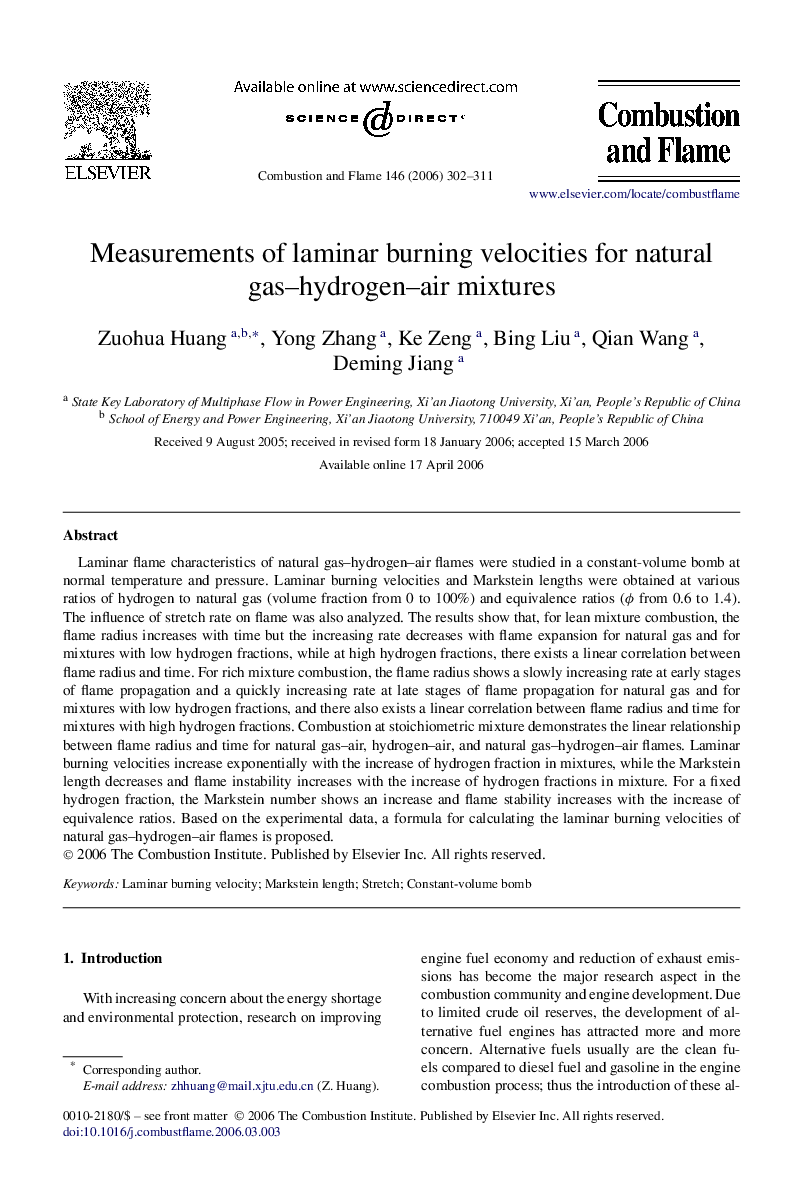| Article ID | Journal | Published Year | Pages | File Type |
|---|---|---|---|---|
| 169920 | Combustion and Flame | 2006 | 10 Pages |
Laminar flame characteristics of natural gas–hydrogen–air flames were studied in a constant-volume bomb at normal temperature and pressure. Laminar burning velocities and Markstein lengths were obtained at various ratios of hydrogen to natural gas (volume fraction from 0 to 100%) and equivalence ratios (ϕ from 0.6 to 1.4). The influence of stretch rate on flame was also analyzed. The results show that, for lean mixture combustion, the flame radius increases with time but the increasing rate decreases with flame expansion for natural gas and for mixtures with low hydrogen fractions, while at high hydrogen fractions, there exists a linear correlation between flame radius and time. For rich mixture combustion, the flame radius shows a slowly increasing rate at early stages of flame propagation and a quickly increasing rate at late stages of flame propagation for natural gas and for mixtures with low hydrogen fractions, and there also exists a linear correlation between flame radius and time for mixtures with high hydrogen fractions. Combustion at stoichiometric mixture demonstrates the linear relationship between flame radius and time for natural gas–air, hydrogen–air, and natural gas–hydrogen–air flames. Laminar burning velocities increase exponentially with the increase of hydrogen fraction in mixtures, while the Markstein length decreases and flame instability increases with the increase of hydrogen fractions in mixture. For a fixed hydrogen fraction, the Markstein number shows an increase and flame stability increases with the increase of equivalence ratios. Based on the experimental data, a formula for calculating the laminar burning velocities of natural gas–hydrogen–air flames is proposed.
